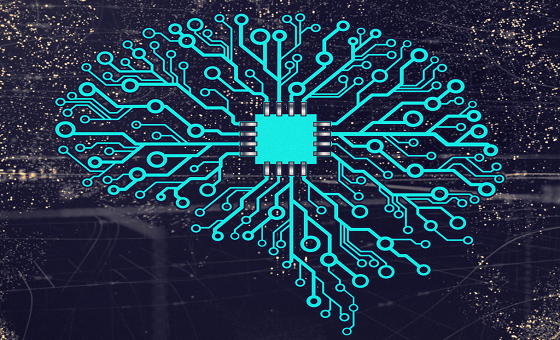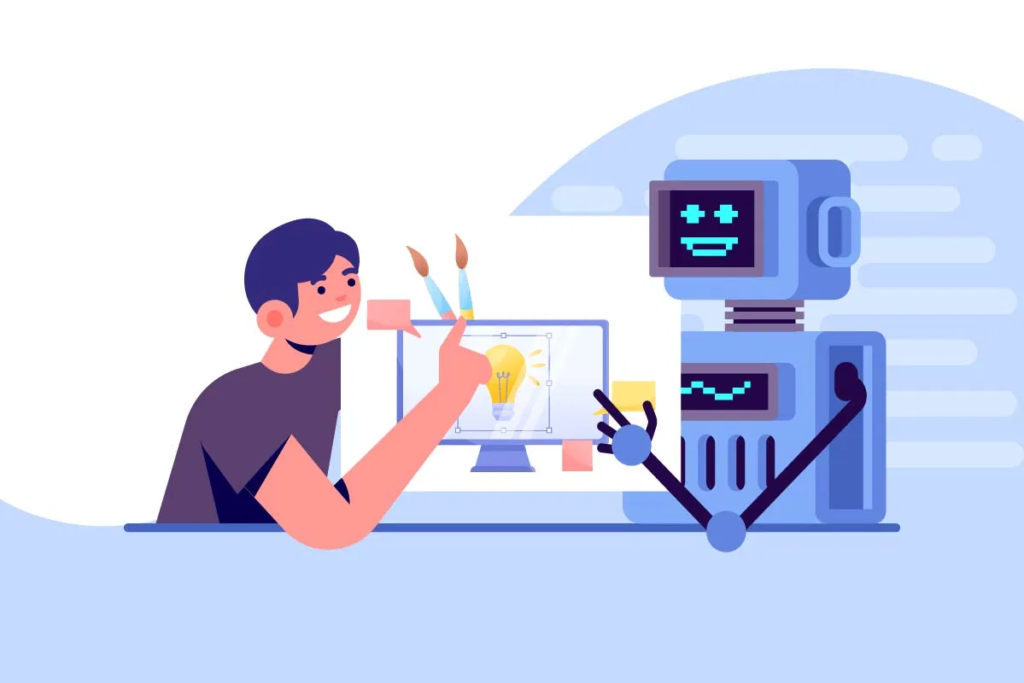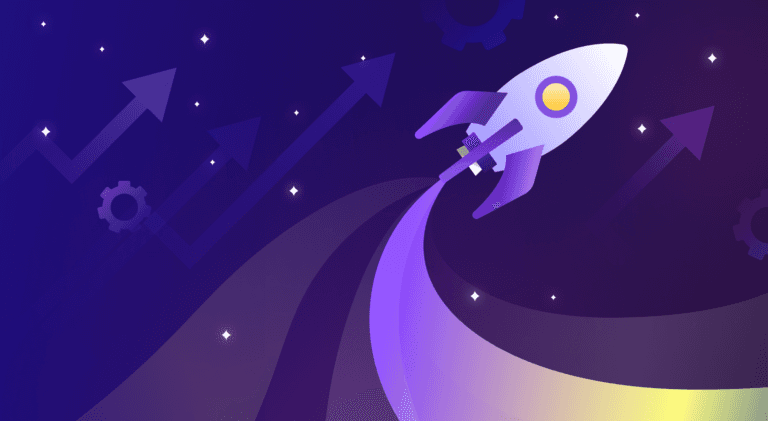5 Ways AI Design Has Transformed the Creative Landscape

Table Of Contents
- The Connection Between AI And Graphic Design
- 5 Ways AI Is Transforming the Design Landscape
- Will AI Replace Graphic Designers In The Long Run?
- Conclusion
- FAQs
Whether it’s Google Photos categorizing our pictures in separate folders by detecting the faces or Gmail recommending what to type next as we draft an email, we are constantly surrounded by the power of AI.

AI in design has become intangible. It has transformed and transformed again to be where it is today, and to this second, it continues to evolve. It has seeped into various professional fields before spreading its branches to the arenas of graphic designing and advertising, where it thrives.
The Connection Between AI and Design
Artificial Intelligence– the very term excites us and terrifies us simultaneously. People are tirelessly seeking to figure it out, spending days after weeks experimenting with it, designing Artificial Intelligence in a way that has never been witnessed before.
Robots are reporting the news, AI is painting canvases for international art exhibitions, computer-generated tunes are breaking records on the internet, you name it. AI and design are linked everywhere.
Artificial Intelligence has become a buzzword, with developers and designers orbiting it like planets around the Sun. Gone are the days when websites were made with the mere help of HTML. Now, they are more complex, more structured. And AI is nothing short of a game-changer in today’s digital world.
Designing is not merely about creating an aesthetically pleasing landing page anymore. The advanced UI and responsive designs have transformed the scenario completely, and when we have access to such cutting-edge technology, doubts are bound to arise.
Doubts that creep up your spine and travel upwards until they become an itch at the back of your brain, questioning if AI will replace you in the long run, rendering you jobless. It is tough being a professional mortal when you are surrounded by sensational headlines welcoming the future of technology and the impact of AI in design. However, before going down that rabbit hole, let’s take a look at a few applications of AI in graphic design.
5 Ways AI is Transforming the Design Landscape
Now that you know how AI and design are related let’s look at how it is transforming the design landscape.
1. Improving overall user experience
From creating images beyond the capability of mortal hands to making logos to designing elaborate layouts for websites, AI in design works wonders to bring unique content to the table.
Analyzing the users constantly and checking the relevance of said designs to the audience makes things a lot easier. Systems powered by AI can categorize websites and choose suitable font styles, backgrounds, color combinations, etc., based on the stored data.
Designing Artificial Intelligence-powered systems makes the process easier and more cost-effective for designers. Not to mention how it improves efficiency and creates multiple designs instantly, which helps save time.
2. Optimizing performance
Performance optimization is one of the most important uses of AI in design and advertising. Here, machine learning algorithms analyze the performance of ads across platforms and then recommend ways to enhance said performance for a better user experience.
AI also brings certain undetected bottlenecks to light while evaluating the performance. Besides, it saves time and effort by automating the actions to be performed next.
3. Facilitating voice search
Voice search is enormous in the web world, thanks to AI. Users have short attention spans. You will probably close a tab if a website takes more than 3 seconds to load. And that’s why facilitating voice search has been a hit.
AI and design combined have helped users enjoy a more comfortable experience, especially since they no longer need to type out long sentences.
4. Creating ads
AI in design is used to create advertisements based on the user’s intent and goals. The Artificial Intelligence design leverages natural language generation and processing to bring ads that have the potential to perform better than the ones created by humans.
That is because AI uses data to analyze the audience’s behavioral patterns and customizes ads based on their needs.
5. Targeting audience
While creating advertisements, designs, or web pages, the primary goal is to target the right audience. This is where AI and design come together to deliver effective results.
AI’s capability to analyze and trace a trend in the past and present patterns in customers and ad performances can be used to increase reach considerably.
By measuring these infographics against the standard key performance indicators, AI can identify which group of people can be targeted next.
Will AI Replace Graphic Designers in the Long Run?

The inevitable question that arises every time we speak of AI is if it will render everything we know to this day useless. Will graphic designers become obsolete? It’s important to understand that AI in design is not a threat as it is a blessing.
Although these intelligent tools can cope with tedious tasks and deliver results more quickly than humans, we still need a designer to chisel the experiences and personalize them per consumer requirements.
The designer is the editor, the controller. They will splice, mix, compile, and evaluate the design before sending it out. They add sentiment and empathy to the design, which the AI still needs some help with. AI has immense potential in the design world, but the entire system needs to be deconstructed for taking over graphic designers.
Conclusion
All the points mentioned above clarify one thing– AI in design has indeed made a mark. It has transformed multiple arenas worldwide and will keep doing so in the future.
It caters to the needs of users, industries, and businesses and analyzes and automates their work efficiently with its cognitive abilities. Just like AI writers who write ad copy, it is here to stay, but not replace, since it still needs humans to fine-tune the work.
FAQs
The input of AI in design helps understand the behavioral pattern of the users better. This tailored data helps reach a larger audience and serves a greater purpose. Using conversion insights, AI improves the overall user experience.
Artificial Intelligence design can work effectively to automate data. It runs several tests to analyze and determine whether a product is structurally sound and good to go. It also brings down the design costs since it is much more cost-effective than human labor.
Think of AI as an aid, not the controller. Using AI in design can help developers create content of the highest quality. Even though some human tasks may be replaced, AI is unlikely to take over graphic designers just yet.
Latest Blogs
Explore the best healthcare SEO services for your medical practice. Improve online visibility and effectively reach more patients in need of your services.
Discover top social media agencies specializing in banking solutions, enhancing financial services and driving engagement.
Explore top B2B content marketing agencies of 2024. Engage decision-makers with impactful, high-quality content strategies.
Get your hands on the latest news!
Similar Posts

Artificial Intelligence
5 mins read
How Free AI Tools for Content Creation Can Boost Your Content Strategy

Artificial Intelligence
5 mins read
How A Lead Generation Specialist Can Use AI-Powered Content Funnels to Drive Conversions

Artificial Intelligence
6 mins read